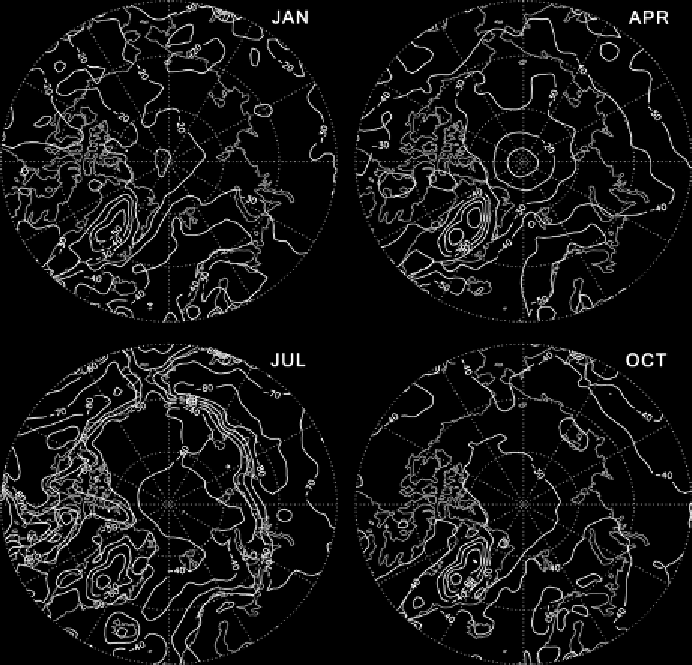Geoscience Reference
In-Depth Information
Figure 5.7.
Mean monthly net longwave radiation at the surface (Wm
−2
) for the
four mid-season months based on ISCCP-D data (courtesy of J. Key, NOAA,
Madison, WI).
the four mid-season months are provided in
Figure 5.8
. Values across the Arctic
are negative from October through March. During polar darkness, the fields are
of course essentially identical to those for the net longwave flux. For April, the
ISCCP-D fields indicate that net radiation is slightly positive over the Arctic Ocean.
The downwelling solar flux is significant for this month, with central Arctic values
ranging from 100-130 Wm
−2
(
Figure 5.1
). However, the high albedo of the surface
means that most of this solar energy is lost back to space. June values of net radia-
tion (not shown) over the central Arctic Ocean are about 80-95 W m
−2
, compared
to about 85-100 W m
−2
in July. This asymmetry with respect to solar declination is
largely attributed to albedo. Whereas solar radiation peaks in June, this is offset by
the lower albedo in July. Over land areas, the flux peaks in June. July fluxes over
land areas typically range from 115 to 140 W m
−2
.

